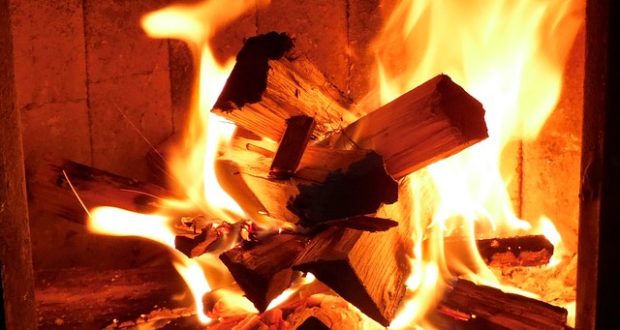I have three wood-burning stoves: a wood-burning cook stove in the kitchen of my cabin, a box stove with a glass door in the living room, and a boxwood, cast iron stove in the garage.
I’ve learned that some general inspections and maintenance can go a long way toward preventing problems when the weather gets frigid. Properly preparing your wood stove for winter use can save you a lot of time and money.
Beware of Creosote Build up
While there are some routine maintenance checkups and repairs we might consider, creosote is a major problem and threat in any wood-burning stove.
Creosote is a buildup of carbon-based chemicals in a stove and especially in stovepipes and chimneys. There are a variety of causes that lead to creosote buildup:
- Burning green or unseasoned woods that create excessive smoke and release numerous chemicals into the smoke.
- Burning at a low temperature, which also creates excess smoke.
- The effects of temperature on a stovepipe, especially through a cold, unheated space like an attic that causes the smoke to cool and coalesce on the sides of a stovepipe.
- A clogged or inefficient stovepipe cap that does not vent properly.
Preparing Your Wood Stove
This is not to say that wood-burning stove maintenance is all about creosote, but it leads to a strategy for how to maintain stoves for winter. Here are seven steps homesteaders and users of wood stoves should follow before winter arrives:
1. Start at the top.
Check the hood on your stovepipe top and make sure the spark arrester screens are clean and clear. They will often rust with time and result in holes in the screen or become clogged. This will affect airflow and efficient burning. If you’re afraid of heights, then hire a chimney sweep.
Be Prepared For Blackouts With A Dependable Solar Powered Generator
2. Sweep the chimneys and stovepipes.
A chimney sweep can do this, or you can do it yourself if you buy the right size chimney brushes and the long handles that screw into each other to reach down the length of the stovepipe or chimney. This removes creosote (and you will always have some), and cleans out any other debris that may have found its way into the chimney or flue.
3. Vacuum.
My sons and I use an industrial wet/dry vac that we bought at the local hardware store. They’re not that expensive. We start by vacuuming any of the debris or creosote that’s landed in the wood stove firebox after the chimney sweeping. Then we work on the firebox.
4. Scrape the firebox.
Every firebox will also have its share of creosote and other residue. Wear a mask over your mouth and nose and maybe some safety goggles and scrape the side of the firebox with a metal brush, and perhaps a metal scraper. Vacuum everything up and inspect the interior with a flashlight to see if you missed anything, but don’t get too fussy about it. You’re just trying to get the crusty stuff off the walls of the firebox.
5. Check door gaskets.
Every wood-burning stove has a door on the firebox. This door has a gasket that will tolerate the highest temperatures and is usually a synthetic, braided rope glued in place with a compound that can tolerate high temperatures. When a gasket gets old or compromised, it can allow smoke to escape from the stove, or air to enter the firebox in an uncontrolled manner. You don’t want this to happen.
Visually inspect your stove door gasket and if you smell smoke when you burn, it may need to be replaced. There are numerous videos on YouTube that show you how to do this, and anytime you buy a new gasket kit from your wood stove supplier it will always come with instructions.
6. Clean the glass.
Many wood-burning stoves have a glass insert in the fire door. It is a glass designed to tolerate high temperatures, but often there will be a buildup of a brown residue on the glass over time. You can scrape this with a razor blade, but there are chemical solutions that will remove this residue without the risk of scratching the glass.
7. Polish and sharpen up the outside of the wood stove.
Our wood-burning stoves are often a prominent part of our décor in our homes and cabins. They also rust and show some wear and tear. There are many solutions to this, from paints to other applications that can refurbish the look of a wood-burning stove.
These are available online or at stores that specialize in wood-burning stoves. Follow the directions, but keep one thing in mind. Your next fire after painting or refurbishing your wood stove is going to result in a smell that will fill the room if not the house. Now’s the time to open the windows and burn off that new exterior coating or paint. You don’t want to be smelling this on a night when it’s 10 below zero Fahrenheit and opening a window or door is a problem.
The other benefit of an early fire before you really need it is the ability to check for smoke leaks in the stove pipes, check air flow and check for smoke leaks. You want to do it when you have the option to make corrections and fixes before you are totally dependent on the stove for heat. Most of these maintenance steps require a cold stove with no fire. That’s not something you will have in January if you’re totally dependent on wood stoves for heat.
What maintenance tips would you add? Share them in the section below:



